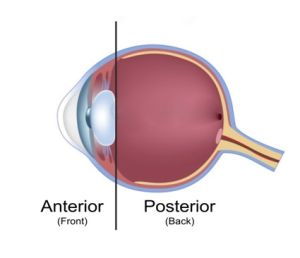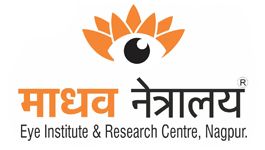& VITREOUS

The eye for the sake of convenience is divided into an anterior and posterior segment.
(front and back portion of the eye)
In the vitreoretinal department, we take care of the diseases of Vitreous and Retina along with the conditions which cause ocular inflammation (swelling of the layers of the eye).
The main diseases which affect the eyes are Diabetes (diabetic retinopathy), aging (Age-related macular degeneration) and Retinal detachment. There are multiple other disorders such as uveitis, hereditary retinal conditions, retinopathy of prematurity which are really less common but are as important as them.
When a patient comes to us, first our doctor examines the patient and ascertains the need of the patient.
Investigations are advised thereafter.
Diagnostic devices available with us are
1. Optical Coherence Tomography (oct) –
This technology enables as to see the real-time cross-section of the macula (seeing part of the eye)
This helps us to observe the tissue at a microscopic level, layer by layer both of which is not possible only by examination of the naked eye.
2. Best in Class Carl Zeiss Cirrus Oct angiography-
OCT can now be also used to do a noninvasive angiography of the retina. (mapping the blood vessels of the retina without the use of a dye and without poking a needle in the body)
This technology is very effectively used to understand and quantify subtle changes in the eye.
3. Fundus Photography-
We have a best in class fundus camera by Carl Zeiss which can take regular photographs of the retina and also autofluorescence images along with the capability to do fluorescein and indocyanine green angiography.
Once we diagnose the patient, we advise treatment which is in the form of intravitreal injections of which we have the whole range of options, a laser to the retina for which we have Carl Zeiss visuals frequency doubled ND YAG laser (green laser).
Vitrectomy for which we have best in class, Alcon Constellation Vision System.
Diabetic retinopathy
Diabetic retinopathy is something a diabetic cannot avoid. But measures can be taken to keep it under check.
Two things a patient can do are
The strict control of Blood Sugar.
Regular eye checkup (at least in 6 months)
As the retinopathy worsens your eye surgeon may call you more frequently.
A diabetic may have retinopathy irrespective of control on diabetes, but worse is the control of blood sugar, worst is the disease.
Age-related macular degeneration (ARMD)
Age-related changes occur in the eyes.
It’s the extent and the diminution of vision that makes them significant in some patients than the others. ARMD is of two types i.e. dry and wet.
The dry form is relatively benign (less harmful) and slowly progressive whereas wet form causes acute (fast) loss of vision.
In any case of ARMD patients need regular follow-up and antioxidant supplements to help maintain usable vision.
Patients who cannot maintain good vision with any treatment can be prescribed low vision aids which help patients use the available vision to its potential.
Retinal detachment
Retinal detachment is one retinal condition which needs surgical management and will lead to blindness if untreated.
Typical symptoms of Retinal detachment are a sudden diminution of vision with a feeling of the curtain falling over the eye. It may or may not be associated with the appearance of floaters (black webs or dots floating in front of the visual field) and flashes (shimmering dots of light moving in the eyes).
People who are at a higher risk of retinal detachment are
Myopes (near-sighted people) (Especially If the glasses are more than –3 Diopters)
People who have had a retinal detachment in one eye
People who have had a retinal detachment in their blood relations

